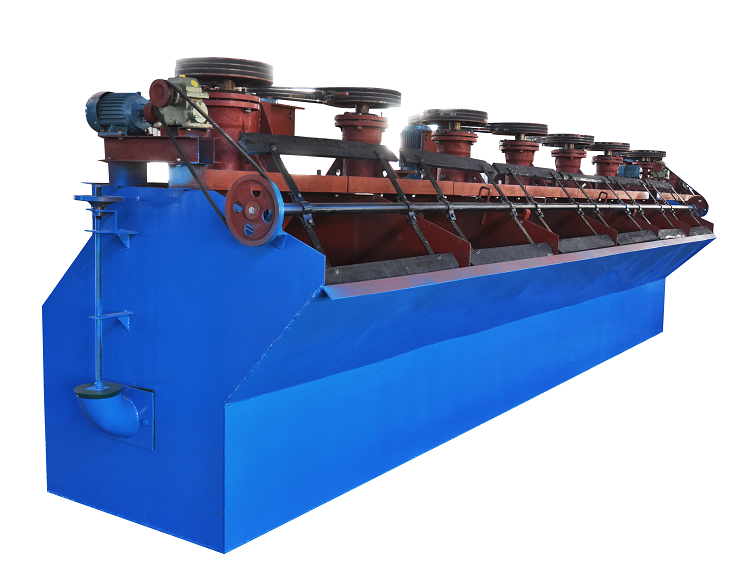
Gravity Separation Equipment

Washing & Screening Equipment

Crushing & Grinding Equipment

Flotation is undoubtedly the most important and versatile mineral processing technique and its application is being expanded to treat greater tonnages and to cover new areas. In flotation cell concentration, the mineral is usually transferred to the froth, or float fraction, leaving the gangue in the pulp or tailing.

Brief Introduction
Froth flotation is a process for separating minerals from gangue by taking advantage of differences in their hydrophobicity. Hydrophobicity differences between valuable minerals and waste gangue are increased through the use of surfactants and wetting agents. The selective separation of the minerals makes processing complex (that is, mixed) ores economically feasible. The flotation process is used for the separation of a large range of sulfides, carbonates and oxides prior to further refinement. Phosphates and coal are also upgraded (purified) by flotation technology.
ApplicationOf Flotation Machine
Flotation is a selective process and can be used to achieve specific separations from complex ores such as lead-zinc, copper-zinc, etc. Initially developed to treat the sulphides of copper, lead, and zinc, the field of flotation has now expanded to include the oxidized minerals, non-metallic ores and fine coal.
Features
1. Large self suction capacity, lower power consumption
2. Have the capacity to suck air and slurry
3. Lower rotational speed of impeller, long service time
4.Slurry in flotation cell cycled up and down in fixed way, which is favorable to the suspension of coarse particles.
Model | Volume (m3) | Impeller Diameter(mm) | Capacity (m3/min) | Impeller Speed(r/min) | Motor Power(KW) | Dimensions (L*W*H) (mm) |
SF-0.37 | 0.37 | 300 | 0.2-0.4 | 352 | 0.55 | 700*700*750 |
SF-0.7 | 0.7 | 350 | 0.3-0.9 | 400 | 1.1 | 920*820*950 |
SF-1.2 | 1.2 | 450 | 0.6-1.2 | 312 | 1.5 | 1100*1100*1100 |
SF-2.8 | 2.8 | 550 | 1.5-3.5 | 268 | 1.5 | 1700*1600*1150 |
SF-4 | 4 | 650 | 0.5-4 | 238 | 1.5 | 1850*2050*1200 |